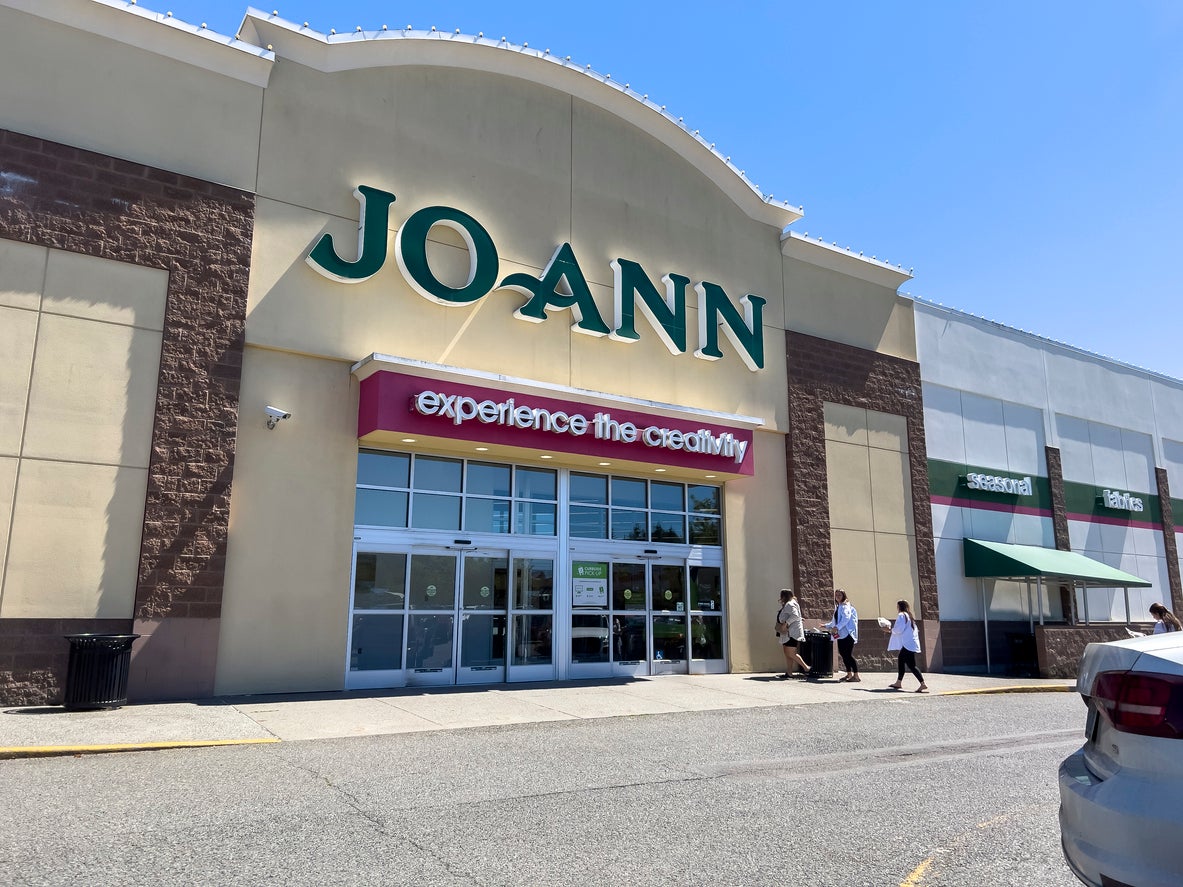Joann Fabrics is closing all of its stores in the U.S., with 112 shops expected to have their final day of business today.
In February, the fabric and craft brand announced it “filed a motion seeking court authority to begin closing approximately 500 stores” across the U.S. This decision was part of an ongoing Chapter 11 bankruptcy, which Joann filed in January for a second time within a year due to financial issues. The news came after Joann’s announced earlier this year that it was closing all 800 locations around the U.S.
The company also noted on its website that right-sizing its “store footprint is a critical part of efforts to ensure the best path forward for Joaan.”
“This was a very difficult decision to make, given the major impact we know it will have on our Team Members, our customers and all of the communities we serve,” a spokesperson for Joann said in a statement to The Associated Press in February. “A careful analysis of store performance and future strategic fit for the Company determined which stores should remain operating as usual at this time.”
Today, April 28, marks the final day of business for 112 Joann stores across the U.S., according to a representative for GA Group, which was the selected bidder to liquidate Joann Fabrics after it filed for bankruptcy.
The representative also told USA Today that 143 other stores closed throughout this month. There are now 545 stores that are scheduled to close by the end of May.
You can search through the full list of closures on the USA Today website.

Joann’s roots date back to 1943, with a single storefront in Cleveland, Ohio. And the retailer later grew into a national chain. Formerly known as Jo-Ann Fabric and Craft Stores, the company rebranded itself with the shortened “Joann” name for its 75th anniversary.
Joann’s two bankruptcy filings within the last year came amid some slowdowns in discretionary spending — notably with consumers taking a step back from at-home crafts. Joann has also faced rising competition in the crafts space from rivals like Hobby Lobby and larger retailers, like Target, who now offer ample art supplies and kits.
While Joann turned to implementing a new business plan after emerging from bankruptcy last spring, “unanticipated inventory challenges emerged, coupled with the prolonged impact of an excessively sluggish retail economy.” This put Joann “back into an untenable debt position,” interim CEO Michael Prendergast noted in a sworn court declaration, filed when Joann initiated its latest Chapter 11 proceedings in January.
Prendergast explained that inventory shortages had significant ripple effects on Joann’s core business, particularly when “in-stock levels eventually dropped by upwards of 10 percent” and led to a “new phase of operational distress.”
Joann isn’t the first brand to announce a slew of store closures. On Wednesday, JCPenney, which filed for Chapter 11 bankruptcy in 2020, revealed it was preparing to close multiple stores in eight states. However, the company said the move is “unrelated to” its recent merger with the SPARC Group, which helped form Catalyst Brands, an organization of six major retailers.
“While we do not have plans to significantly reduce our store count, we expect a handful of JCPenney stores to close by mid-year,” a spokesperson for JCPenney said. “The decision to close a store is never an easy one, but isolated closures do happen from time to time due to expiring lease agreements, market changes, or other factors. We are grateful to our dedicated associates and the loyal customers who have shopped at these locations.”
In December, Party City also confirmed it was closing down all of its stores in the U.S. after 40 years of business. CEO Barry Litwin held a meeting on December 11 with staff to announce the news, notifying them that it would be their last day of employment.
Store closures are expected to continue in 2025, according to a report published by Coresight Research in January. Coresight Research expects store closures to go up to approximately 15,000 in 2025. In 2024, US store closures totaled 7,325, which is the highest it’s been since 2020 when there were nearly 10,000 closures.
Additional reporting by the Associated Press


